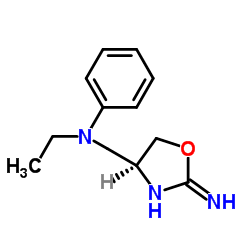| Description |
RO5166017 is an orally active and species-crosses TAAR1 agonist, with Ki values of 1.9 nM, 2.7 nM, 31 nM and 24 nM for mouse, rat, human and cynomolgus monkey, respectively[1].
|
| Related Catalog |
|
| In Vitro |
RO5166017 showed high affinity and potent functional activity at mouse, rat, cynomolgus monkey, and human TAAR1 stably expressed in HEK293 cells as well as high selectivity vs. other targets[1].
|
| In Vivo |
RO5166017 prevents stress-induced hyperthermia and blocked dopamine-dependent hyperlocomotion in cocaine-treated and dopamine transporter knockout mice as well as hyperactivity induced by an NMDA antagonist[1]. RO5166017 (0.01-1 mg/kg, orally) dose-dependently prevents the SIH in NMRI mice. RO5166017 exhibits TAAR1-mediated anxiolytic-like properties at doses 0.1-0.3 mg/kg.[1]. RO5166017 prevents the cocaine-induced hyperlocomotion. RO5166017 also inhibits stereotypies induced by cocaine in WT mice similar to olanzapine, and this effect is lost in Taar1−/− mice[1]. TAAR1 activation by RO5166017 increases glucose-dependent insulin secretion in INS1E cells and human islets and elevated plasma and peptide YY (PYY) and glucagon like peptide 1 (GLP-1) levels in mice[2].Subchronic treatment of diet-induced obese (DIO) mice with RO5166017 results in reduced food intake and body weight[2].
|
| References |
[1]. Florent G Revel, et al. TAAR1 activation modulates monoaminergic neurotransmission, preventing hyperdopaminergic and hypoglutamatergic activity. Proc Natl Acad Sci U S A [2]. Justin N Siemian, et al. Trace amine-associated receptor 1 agonists RO5263397 and RO5166017 attenuate quinpirole-induced yawning but not hypothermia in rats. Behav Pharmacol. 2017 Oct;28(7):590-593.
|
